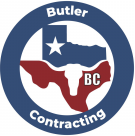Decks can be one of the more enjoyable parts of a home and you might want to get straight to dreaming up an idea and building it immediately, but before you buy your materials and lay down any planks, there are code requirements that must be met by the structure in order to avoid any fines or penalties. Make sure you understand all that is required before you put in any structure that needs to come under a code.
We often hear that customers are told by other contractors that if you are outside City limits a permit is not needed and there is no building code to follow and you can do whatever you want. However, this is untrue, Texas has adopted a building code to follow across the State. Municipalities can choose to require other restrictions or adopt newer codes if they choose to. If you live in an area that is not regulated, then you must follow the 2015 International Residential Code (IRC). This is the code that the Texas legislature has adopted, meaning all residential construction must follow this set of rules and regulations at a minimum regardless of where you may be located in the city, outside the city, or in an unincorporated area.
When A Guardrail Is Required
On any elevated platform that is at least 30” off the ground, guardrails are required. Their primary function is to keep you and your drunk uncle from falling off of said platform.
Guardrail Height Requirement
If you have measured your deck and find that you need a guardrail or you would just like to put one in for extra safety, there is a height requirement for the guardrail. Measuring from the surface of the deck to the top rail, it needs to be at least 36” inches high for residential applications as required by the International Residential Code (IRC). If you’re building an elevated structure in a commercial application, the International Building Code (IBC) requires that the top rail be at least 42” from the surface of the structure.
Bottom Rail Height Requirement
If the guardrail has a bottom rail, the bottom of the bottom rail needs to be 4 inches or less above the surface of the deck.
A 4-Inch Ball Cannot Pass Through The Spindles
This one seems oddly specific, but the rule is that a 4-inch sphere cannot physically be able to pass through any opening in an interior section of the guardrail. Whether it’s between the posts or balusters, there cannot be any opening wider than 4 inches.
Guardrail Load Requirement
The top rail must be able to withstand 200 lbs. of force applied anywhere along the top of the guardrail.
Guardrail Anchoring
Guardrail anchors should be within 36 inches of an open edge. If a guardrail is not properly anchored, it will not be deemed safe.
A Fence Doesn’t Count As A Guardrail
If your deck is 30” or higher off the ground, you are not allowed to use a fence in place of a guardrail. Insect screens also don’t double as a guardrail.
If You Have Stairs, You Might Also Need Handrails
If your deck is high enough to require guardrails, then you’re probably putting in a set of stairs as well. If those stairs have 4 or more risers, then a handrail is required. A handrail is different from a guardrail. It’s a support that should be easy to grasp with your hand.
Handrail Requirements
If you do need to install a handrail, it can be 34 to 38 inches high, measured from the stair tread nosings.
If the handrail is next to a wall, there should be a 1-½ inch space between the rail and the wall.
Handrails can be cylindrical in shape or they can be flat with recesses on both sides for fingers to grasp. If you’re using a circular cross-section rail, the diameter needs to be between 1-¼ inches and 2 inches. The spindle spacing still needs to be no less than a 4-inch air gap like the guard rails and the bottom rail to the step tread can not exceed 6 inches, meaning a ball or sphere 6 inches or greater cannot pass through the space.
Don’t Want To Learn The Codes? Call The Pros!
There are a lot of details when building residential structures, all with their own unique set of codes and requirements. It can be overwhelming to learn it all and make sure that it is within the requirements of the city. If you don’t want to deal with the headache, let us deal with it for you; it’s what we do! You can easily get a quote by going to our website, filling out some basic info, and telling us a bit about your project. You can also speak with us directly by calling (844) 628-8537.



